Is plastic on the menu of Antarctic fish?
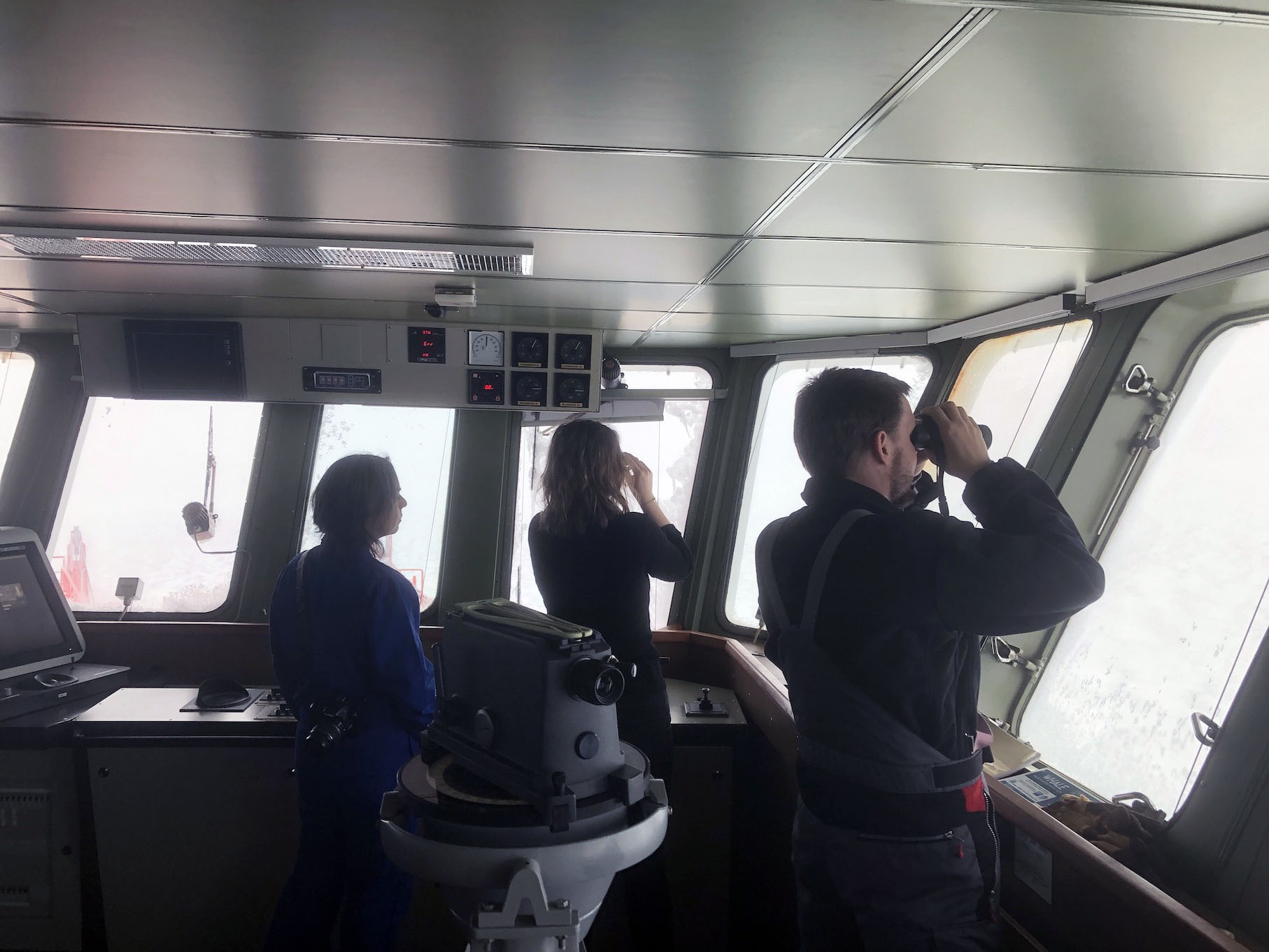
After roughly three weeks of sea voyage, the Polarstern research vessel arrived at our main sampling location in Antarctica. Sea ice and icebergs stretch as far as the eye can see, but plastics are not easily visible at first glance. To find out whether fish are ingesting microplastics, we need to look inside the fish, or rather inside their digestive tracts.
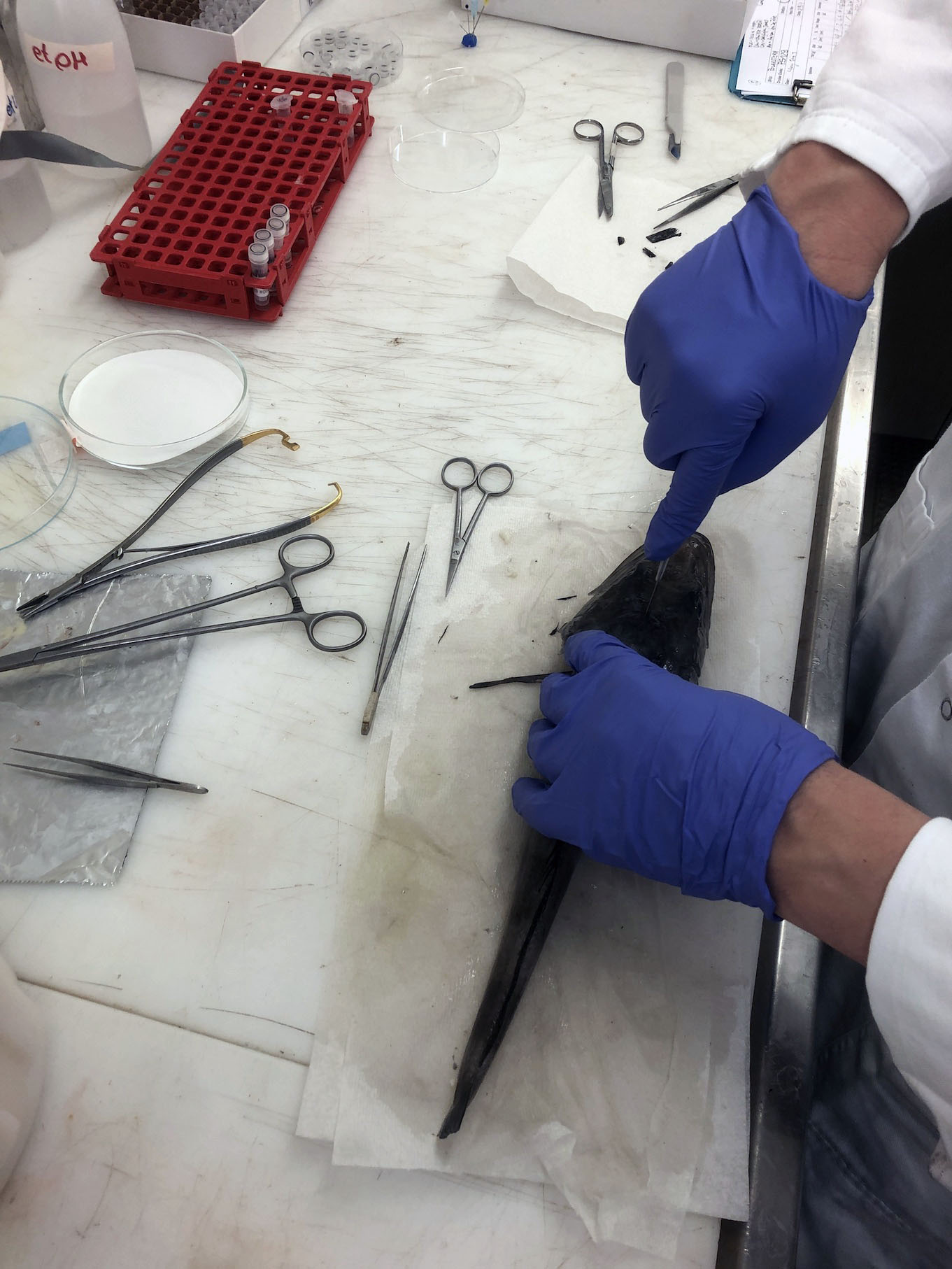
On our ship, each fish caught is dissected to remove the digestive tract, which is then stored for further analysis back in the laboratory in Basel. By the way, the fish are of course used for various other types of analyses. No part of the fish goes to waste. Our colleagues on board the Polarstern are taking blood and tissue samples from the liver, gonads, fins, muscles, eyes and the otoliths, which are small bones in the heads of the fish that help them with their balance.
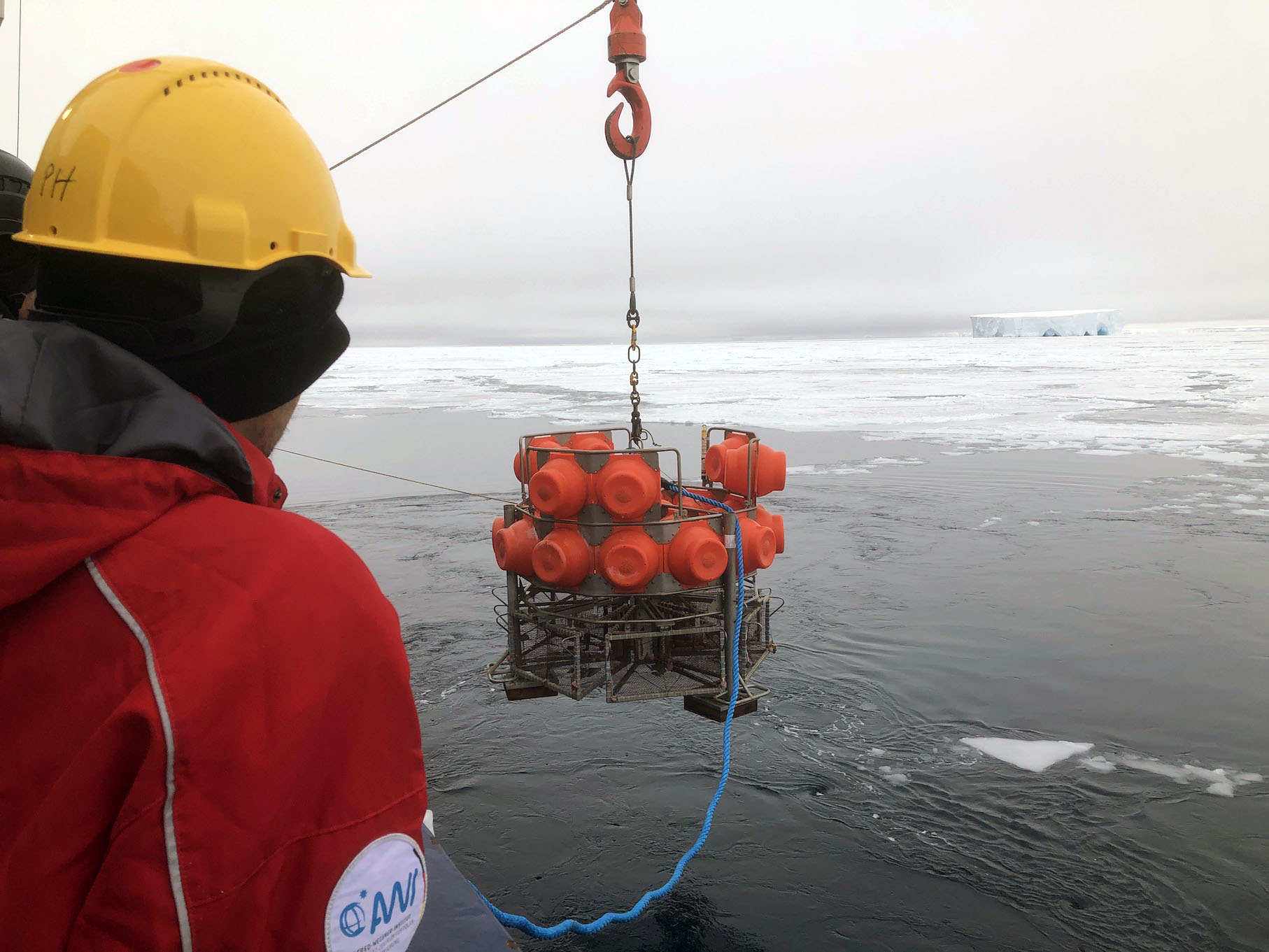
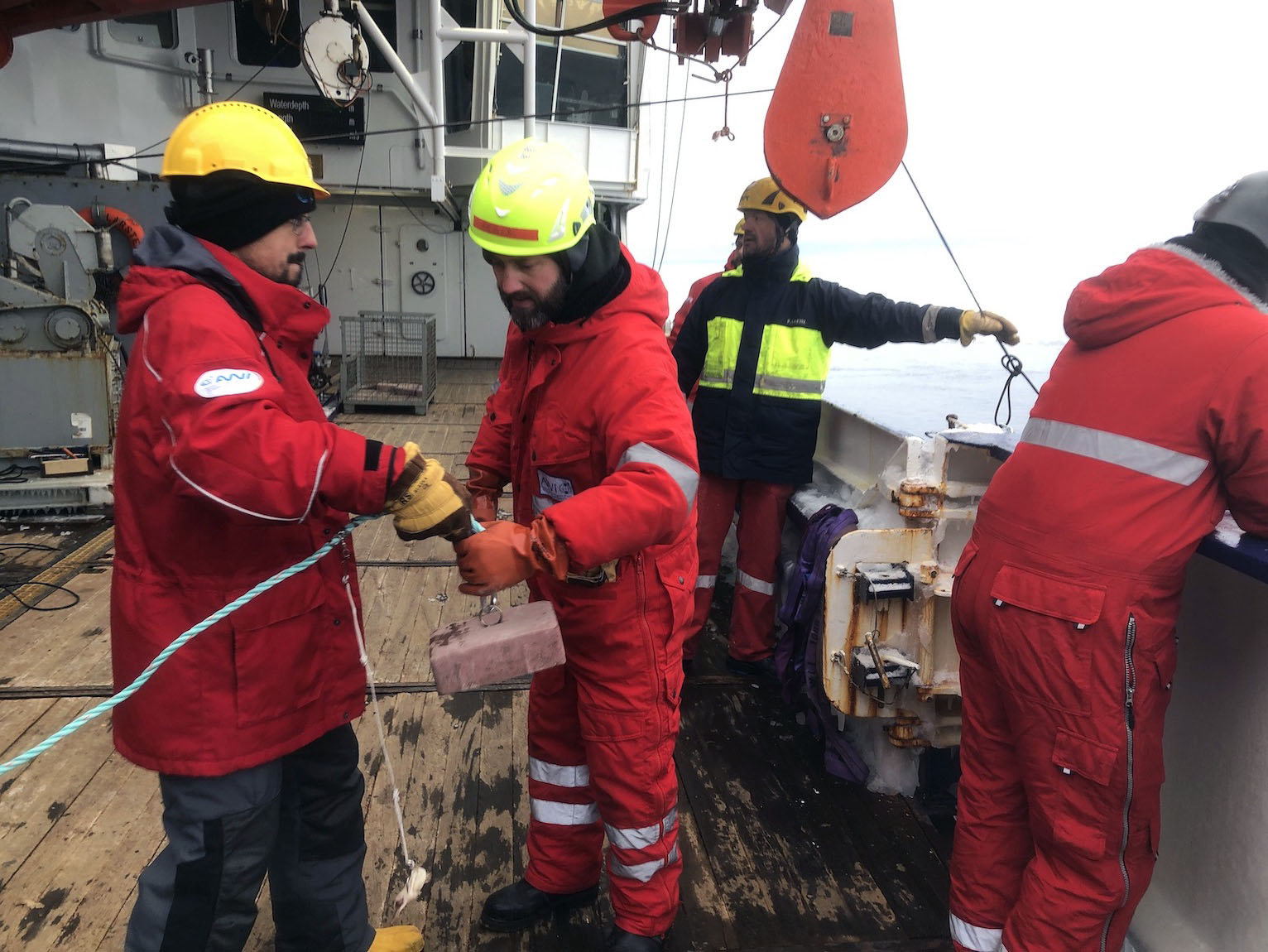
But first we have to land the fish. We use different types of gear to catch them, such as landers with fish traps or longlines, which are commonly used in commercial fishing. As you can see from the picture of the lander, this device consists of a frame to which the fish traps are attached (basket-like structures). Weights are fixed to the “feet” of the lander, which drag the whole device to the bottom of the sea. The lander is then left there for 24 hours, before we return to the GPS-logged position to recover it.
To recover it, the weights can be released remotely, then the large orange buoys, which you can see at the top, bring the lander back to the surface where the researchers and the ship crew can spot it. The longline deployment follows the same principle using weights, releasers and buoys, but a line with baited hooks is deployed instead. In practice this means baiting 350 hooks per longline deployment and fish traps with semi-rotten squid – our clothes acquiring perhaps not the finest fragrance.
2MB field notes from Antarctica
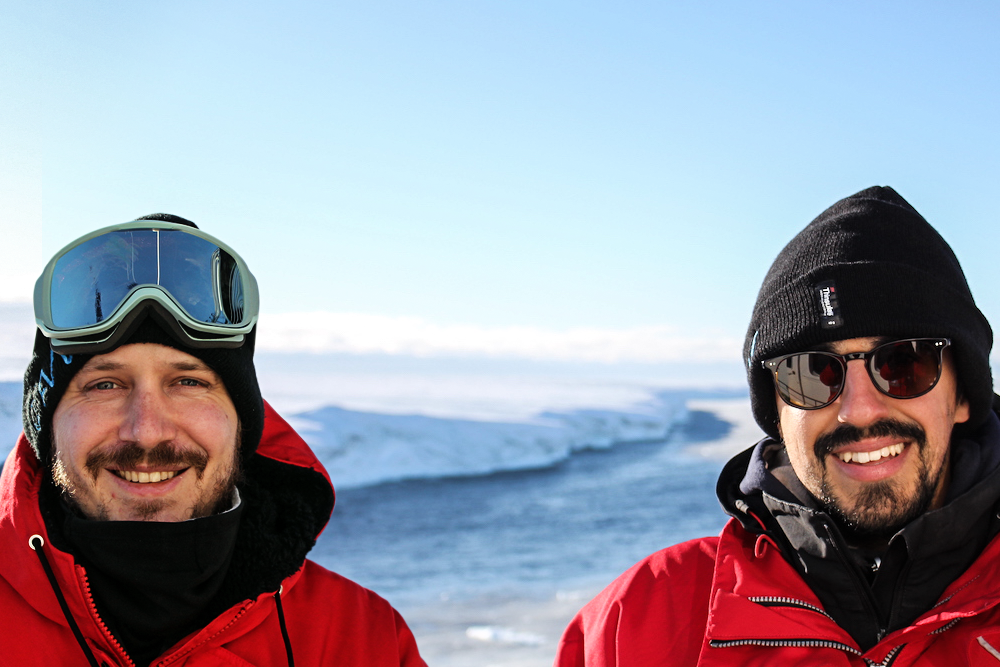
Just 2MB a day?! That’s the data limit for the authors of our polar blog. This spring, Gabriel Erni Cassola (right) and Kevin Leuenberger (left) from the University of Basel are on board the German icebreaker “Polarstern” in the Southern Ocean. The researchers want to find out how animals and bacteria in the Antarctic are affected by microplastics. In this blog series they give us insight into their work and life on board a polar expedition.
Recovering the deployed fishing gear is easy – in theory. But not in Antarctica and so late in the season with sea ice forming around our research area. We returned to the site of the longline deployment on 22 March 2022 and triggered the releaser. As planned, one end of the line started to rise towards the surface…but the orange buoys were never spotted. After a couple of hours in the area and dozens of eyes looking into the sea ice and thick haze, we gave up and continued with other research. It was unclear whether the buoys had been trapped below the ice, or whether the water currents were so strong they did not allow the line to stretch to the surface.
Two days later, with reduced sea ice cover and better visibility, we returned for another attempt at recovery – this time with a hook that could be dragged across the bottom where the line had been deployed – and it worked! Full of excitement we started recovering the line: as the first few hooks were pulled out of the water, a large toothfish emerged measuring at least 1.5 metres. But just before lifting it onto the deck, the fish escaped.
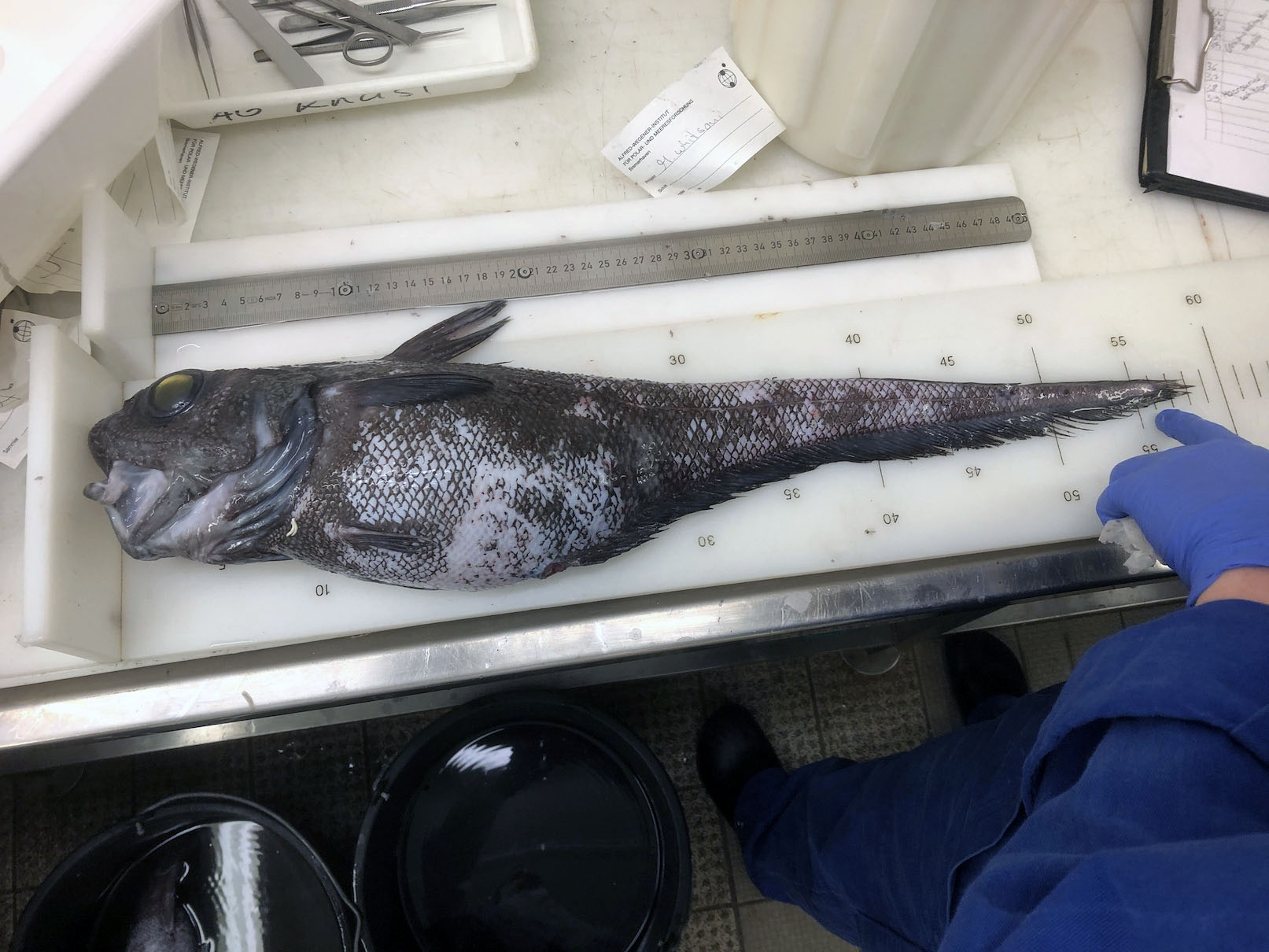
However, we were able to catch several fish, mostly bottom-dwelling species, such as the eel-like eelpouts, grenadier cod, and members of the sub-order Notothenioidei. The latter produce antifreeze proteins allowing them to better brave Antarctic waters. Crocodile icefish or white-blooded fish are a family of species that are particularly prized for research as their blood lacks hemoglobin, a protein which is usually responsible for the transport of oxygen.
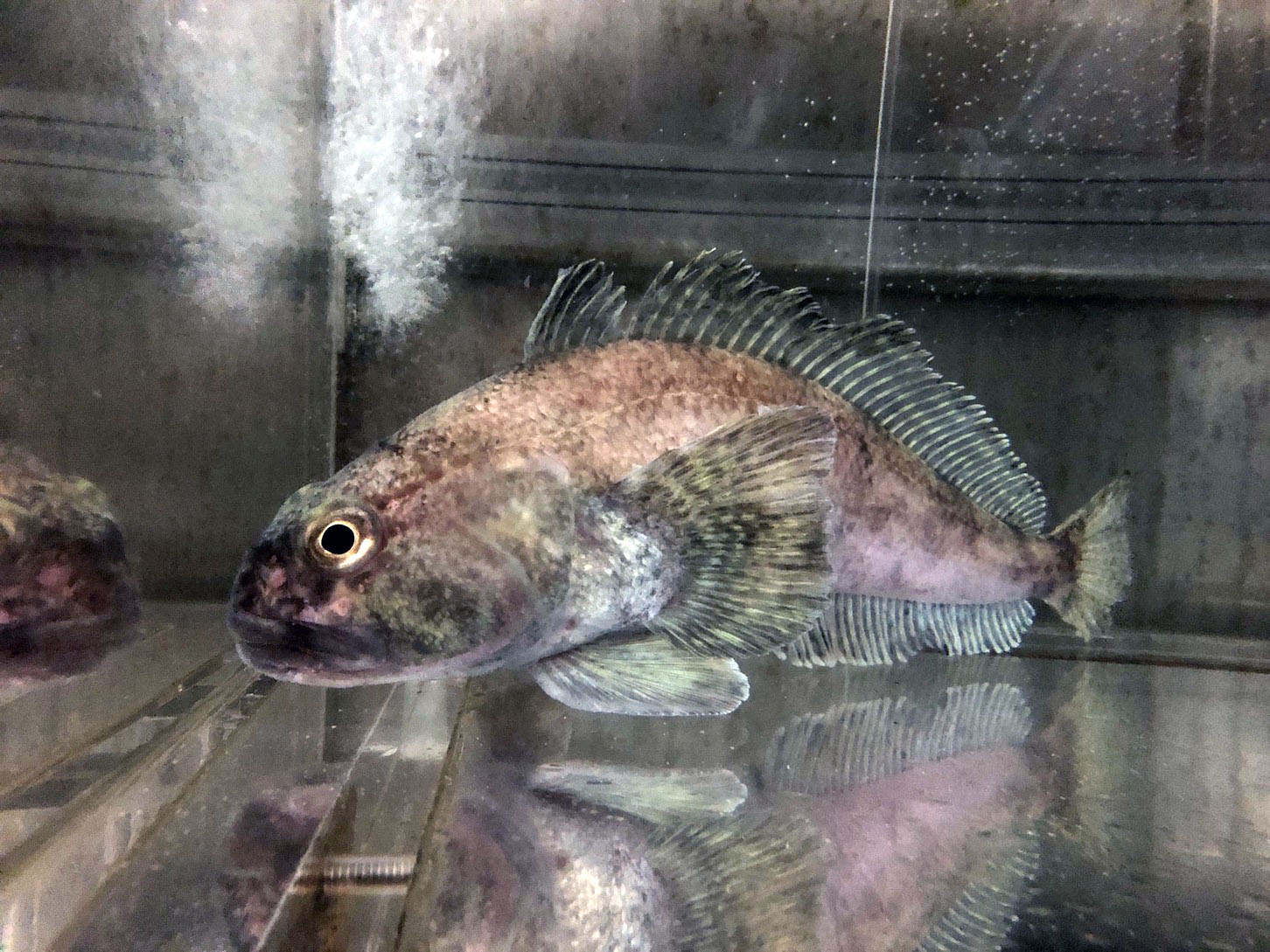
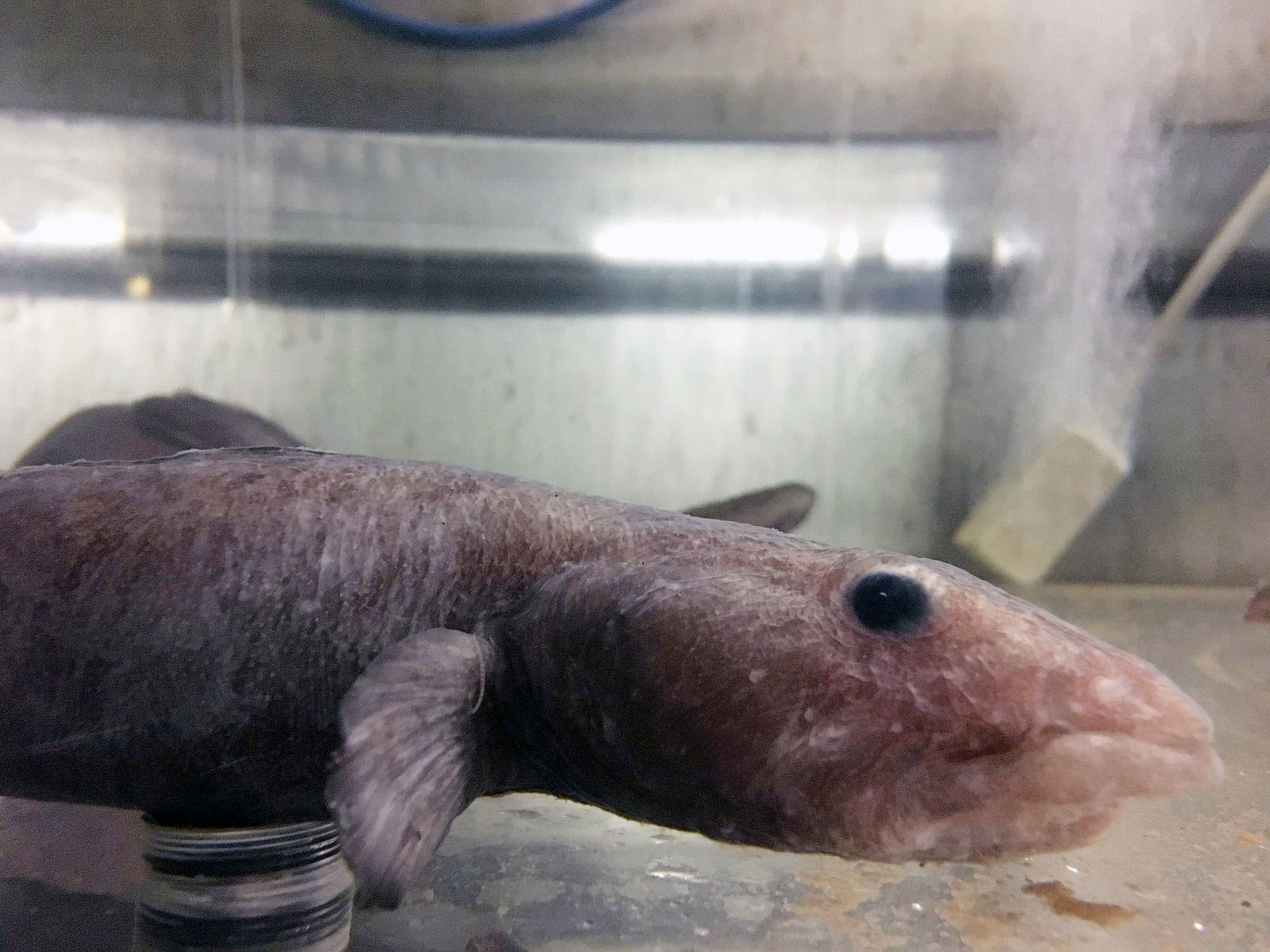
Until our next post, I recommend checking out the Polarstern blogExternal link where you can read about another threat to our gear: icebergs. One particular iceberg almost dragged away expensive equipment attached to a different longline.
Scroll down to read earlier entries from Gabriel and Kevin. To receive future editions of this blog in your inbox, sign up for our science newsletter by putting your e-mail address in the field below.
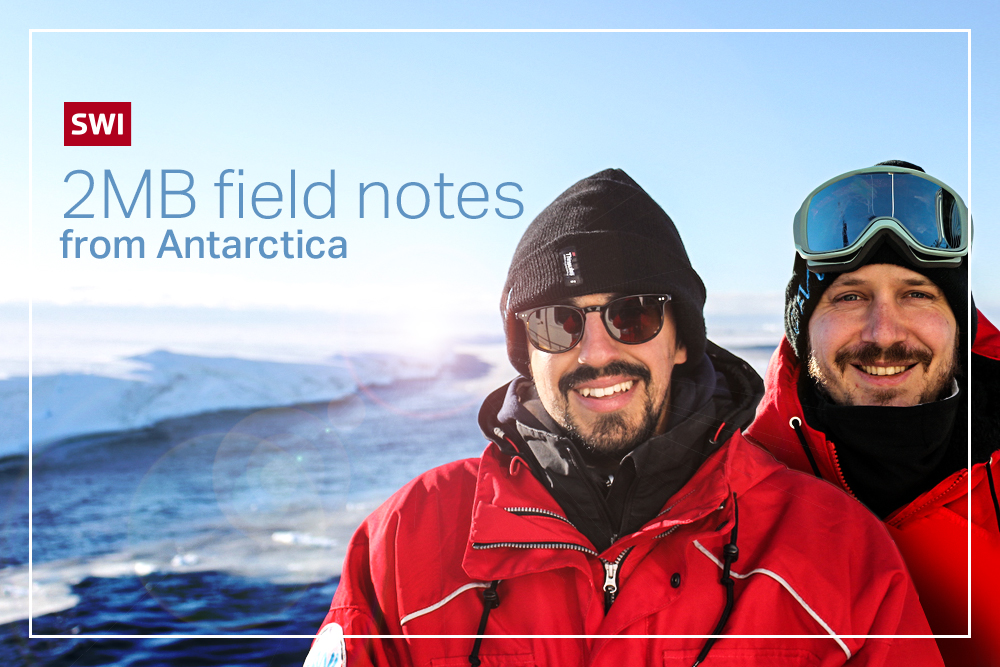
More
2MB field notes from Antarctica
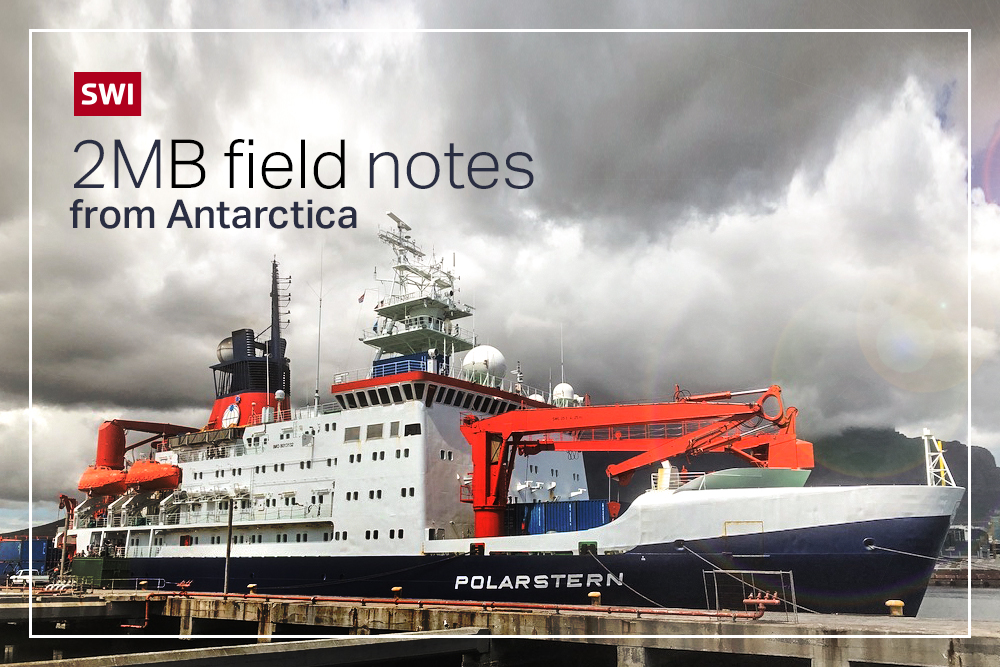
More
Why are we looking at plastic pollution in the Antarctic?

In compliance with the JTI standards
More: SWI swissinfo.ch certified by the Journalism Trust Initiative

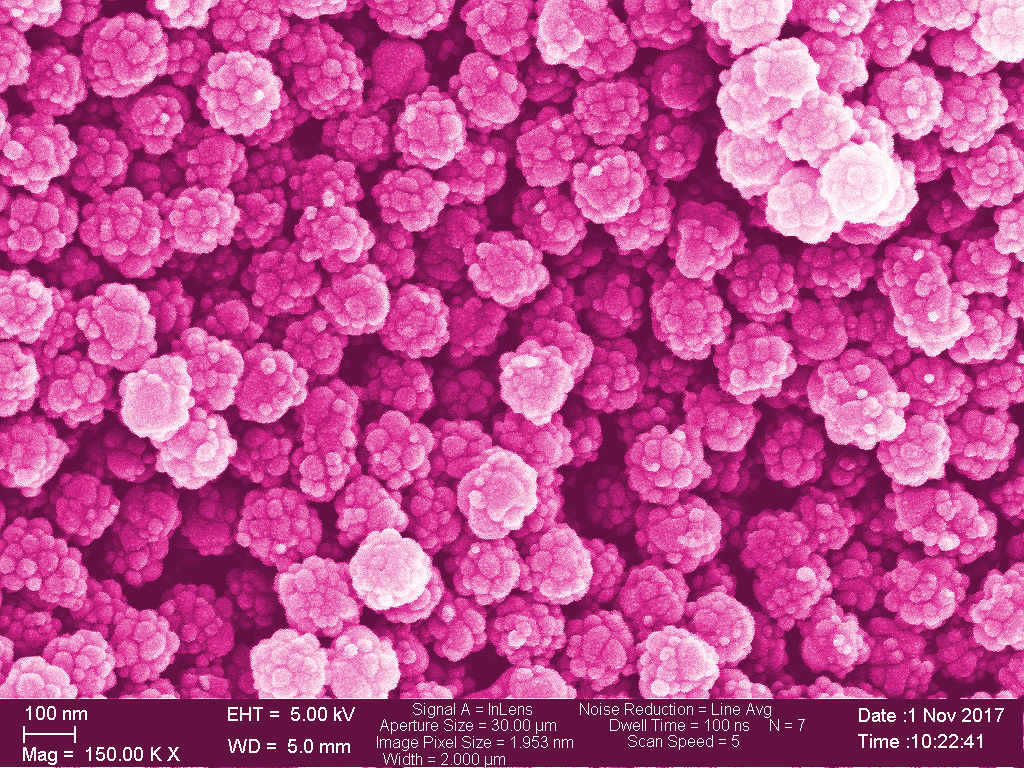
You can find an overview of ongoing debates with our journalists here. Please join us!
If you want to start a conversation about a topic raised in this article or want to report factual errors, email us at english@swissinfo.ch.